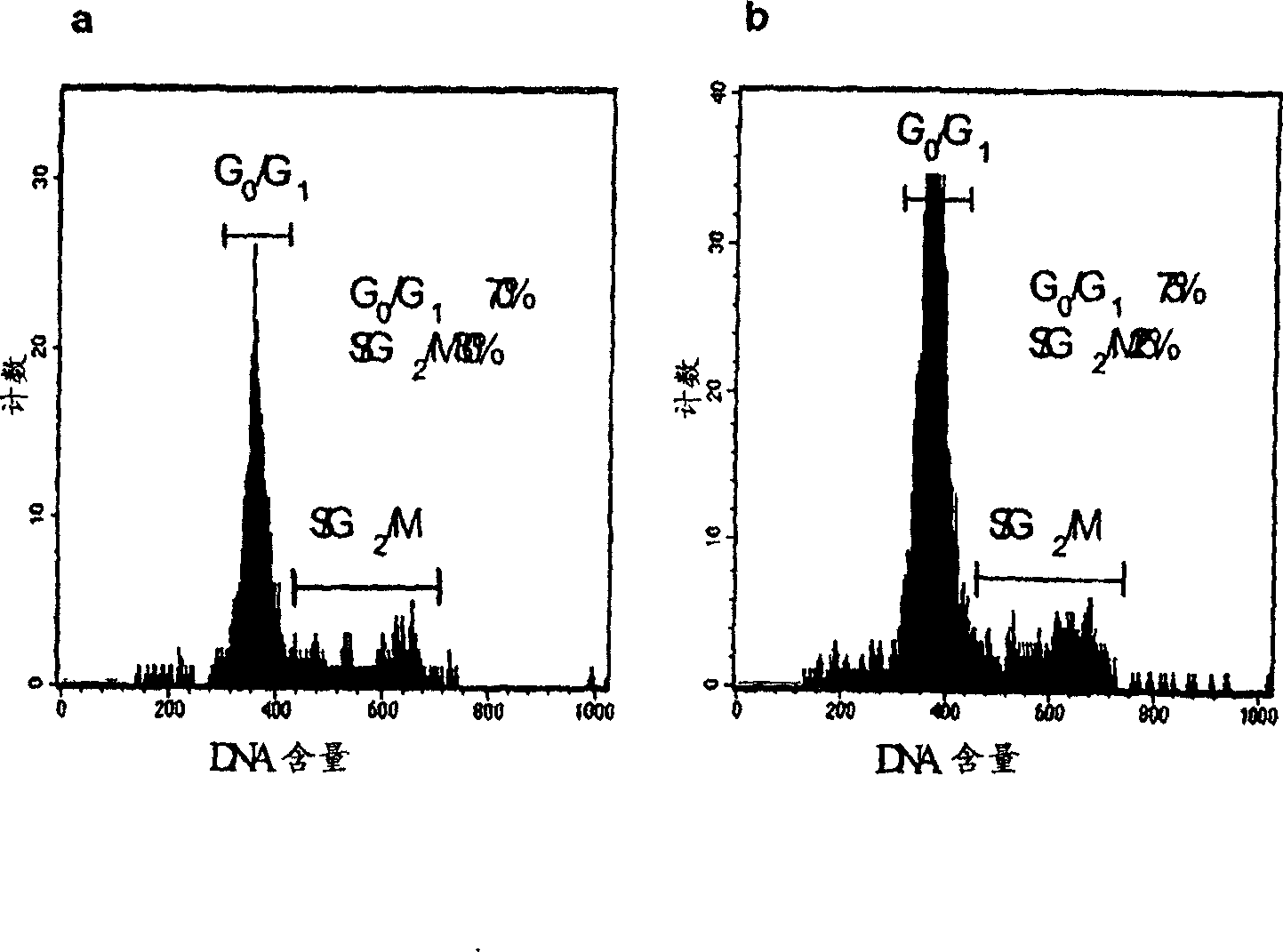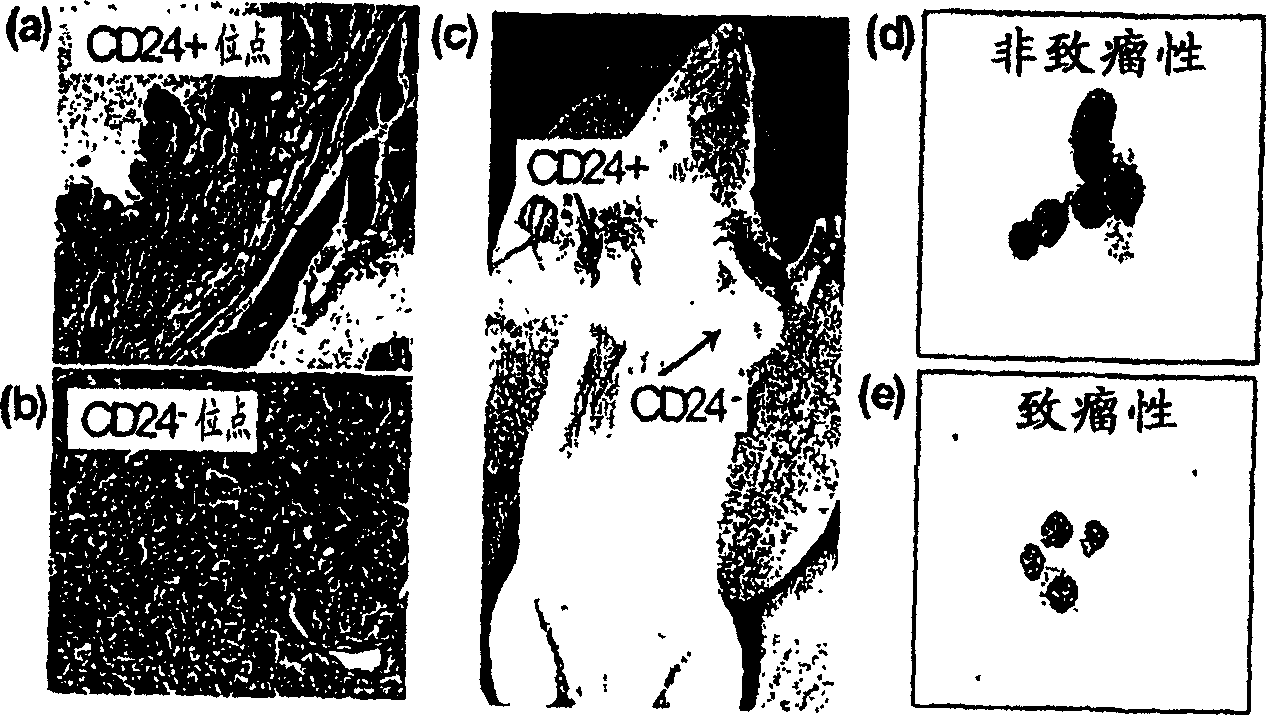Compositions and methods for treating and diagnosing cancer
A composition and biological technology, applied in the direction of biochemical equipment and methods, microbial measurement/testing, etc., can solve problems such as obstacles to reliable tumor measurement methods, and obstacles to the diagnosis and treatment of cancer patients
- Summary
- Abstract
- Description
- Claims
- Application Information
AI Technical Summary
Problems solved by technology
Method used
Image
Examples
Embodiment 1
[1934] Establishment and analysis of solid tumor cell xenograft models
[1935] This example describes the generation of tumors in mice and the analysis of these tumors using human solid tumor cells from humans.
[1936] Materials and methods
[1937]Prepare mice. Eight week old female NOD-SCID mice were anesthetized by intraperitoneal injection of 0.2 ml ketamine / xylazine (300 mg ketamine and 20 mg xylazine in a volume of 4 ml. 0.02 ml of this solution was used per 20 g mouse). Dilute to 200 μl with HBSS. Mice were then treated with VP-16 (etoposide) by intraperitoneal injection (30 mg etoposide dose per 1 kg mouse, diluted to a final injection volume of 200 μl in serum-free HBSS). Simultaneously, place estrogen pellets subcutaneously on the nape of the mouse using a trocar. All tumor injections / implantations were performed 5 days after the procedure. In the following methods, mice were anesthetized as described above.
[1938] Transplantation of primary tumor...
Embodiment 2
[1976] Characterization of the Wnt / β-catenin pathway in human breast cancer tumors
[1977] This example describes how one characterized the Wnt / β-catenin pathway in human breast cancer using the xenograft model described above. The Wnt / β-catenin pathway plays a role in the proliferation and self-renewal of normal stem cells. Although a significant percentage of human breast cancers appear to have constitutive activity of this important pathway, unlike colon cancer, the pathway has not been clearly elucidated in humans. 84-89 role in the pathology of the disease. The xenograft model described above can be used to characterize the biological consequences of this pathway in human breast cancer tumors. These assays are performed using cancer cells and early passage xenograft tumors directly after removal from the patient.
[1978] Function of the Wnt / frizzled / β-catenin signaling pathway in multiple patient tumors. Rationale: Almost 90% of rectal cancers contain mutati...
Embodiment 3
[2015] Localization of β-catenin in tumorigenic cells
[2016] In normal hematopoietic cells, nuclear β-catenin is found only in the stem cell compartment. Reya et al. further demonstrated that β-catenin signaling is required for normal stem cell self-renewal. The recent complete subcellular localization analysis of β-catenin in tumorigenic and non-tumorigenic tumor 1 breast cancer cells further supports this concept. In general, the subcellular distribution of β-catenin in cancer cells is heterogeneous. In some cells, the protein is predominantly located in the outer membrane, while in others it is predominantly in the nucleus. The subcellular distribution of the protein is different in tumorigenic and non-tumorigenic cancer cells. β-catenin is mainly located in the cytoplasm of non-tumorigenic cancer cells, while it is mainly located in tumorigenic cells ( Figure 8 ) in the nucleus of the cell. When activated by Wnt signaling, β-catenin translocates from th...
PUM
 Login to View More
Login to View More Abstract
Description
Claims
Application Information
 Login to View More
Login to View More - Generate Ideas
- Intellectual Property
- Life Sciences
- Materials
- Tech Scout
- Unparalleled Data Quality
- Higher Quality Content
- 60% Fewer Hallucinations
Browse by: Latest US Patents, China's latest patents, Technical Efficacy Thesaurus, Application Domain, Technology Topic, Popular Technical Reports.
© 2025 PatSnap. All rights reserved.Legal|Privacy policy|Modern Slavery Act Transparency Statement|Sitemap|About US| Contact US: help@patsnap.com



